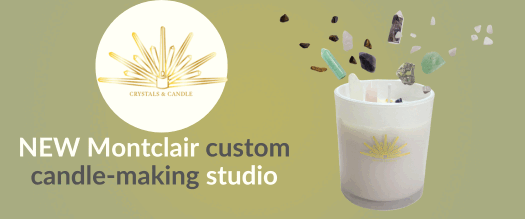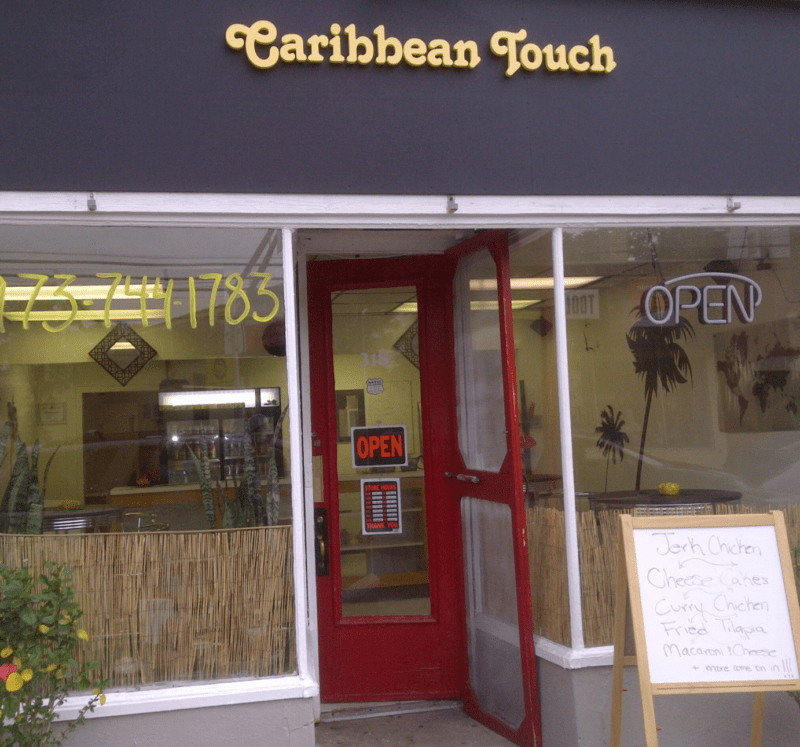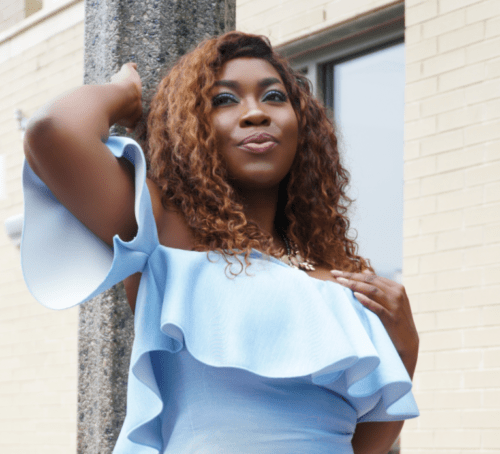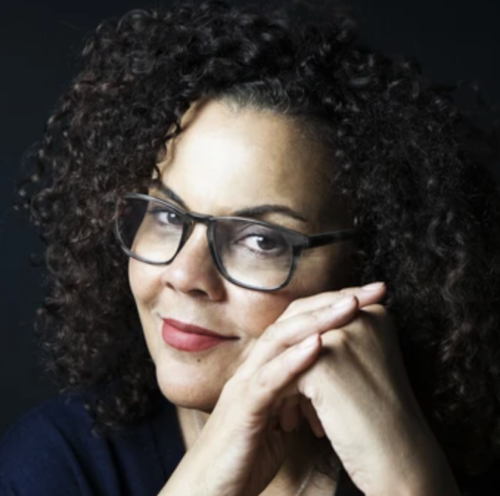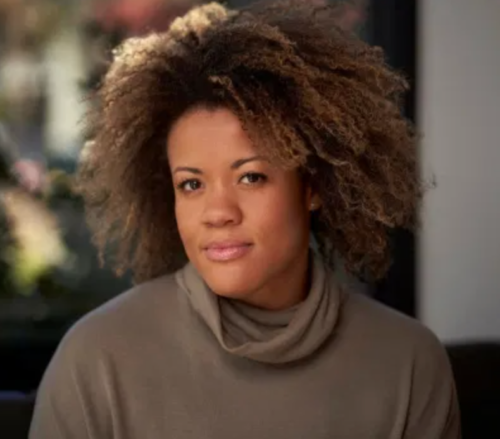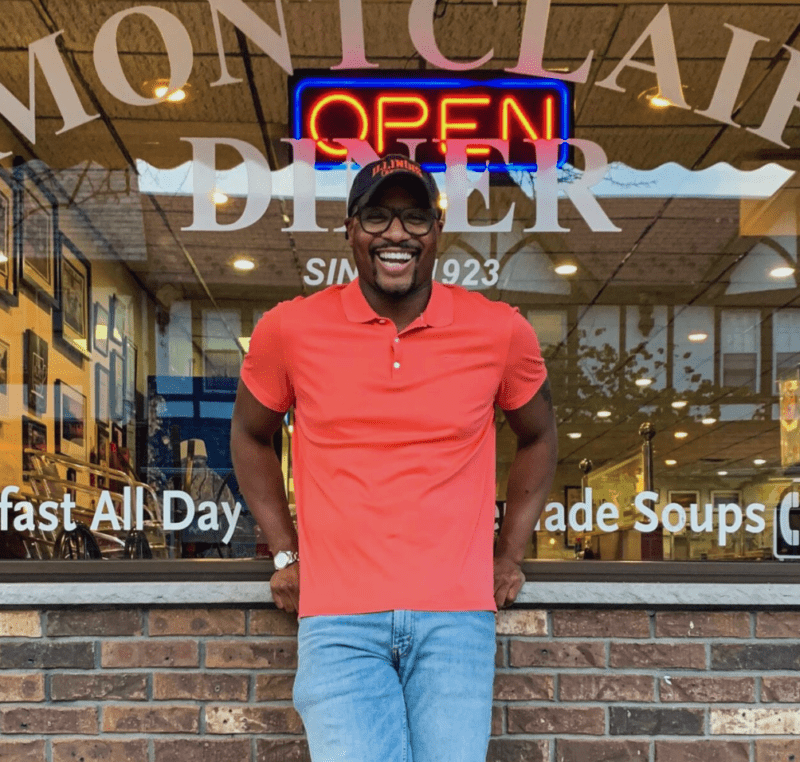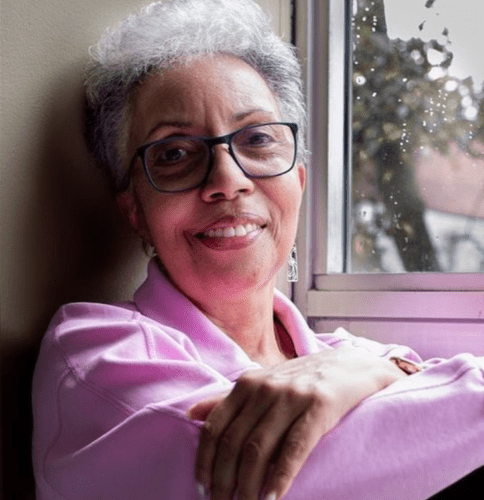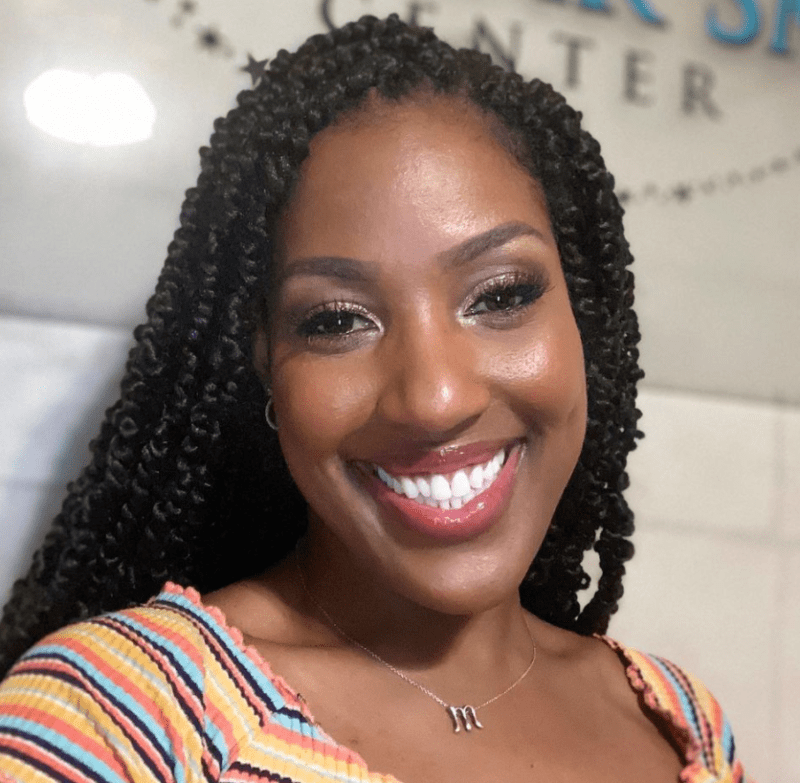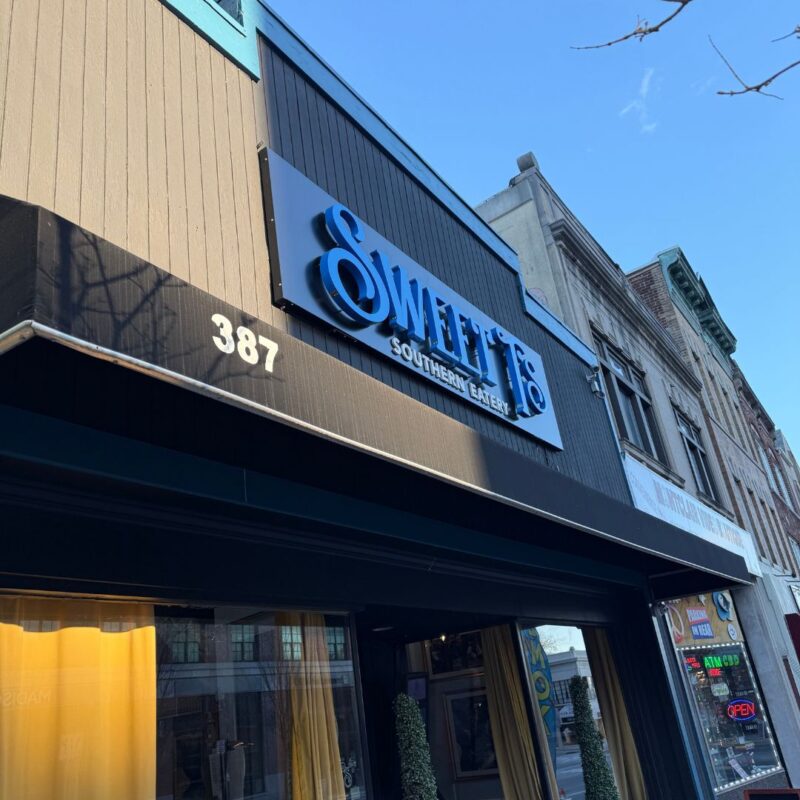The moment you see a coffee tumbler from Grayson White Ceramics, you will feel drawn to it. Handcrafted by Montclair-raised artist Caroline White, her household pottery work is exceptional. From bowls to mugs, vases, and candleholders, Caroline’s aesthetic is both modern and earthy, professional with just a touch of the imperfect. Each of her pieces is individually thrown on a pottery wheel from an amorphous lump of clay, hand-sculpted and shaped to uniformity, and then dried and glazed through a series of firings in her own petite kiln. It’s painstaking, as many handmade arts can be, but it is an absolute labor of love. Read on to learn more about Grayson White Ceramics in Montclair.
About the Artist
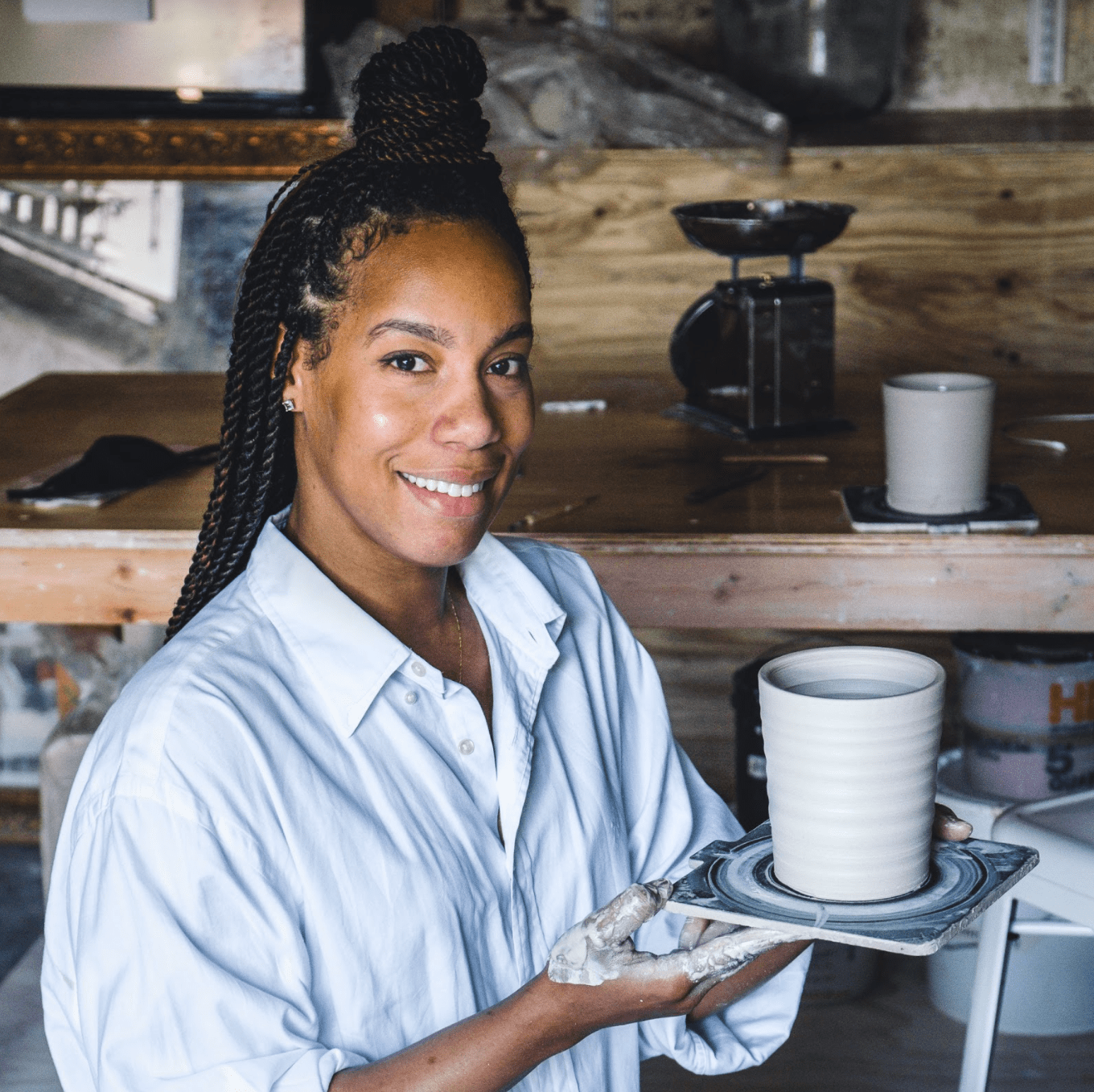
Caroline White hasn’t always had the chance to use her hands, but she’s been a “creative at heart” for many years. Growing up a Girl Scout in Montclair, Caroline is no stranger to community organizing and philanthropy. Her day job as a communications strategist in the social impact and community development finance space is just this.
“It’s something that tends to reward me every day,” she says. But, while she loves her job and finds the work essential and motivating, her creative needs are met in her free time doing pottery.
“I’ve always been drawn to the way that home objects can influence a space,” she says. Her love of pottery grew after taking classes in Brooklyn, learning the craft, and then transferring that knowledge to experimentations with form and shape. “I found myself spending countless hours outside of class to practice and experiment with all of the glaze colors that were provided to me,” she says.

“When I started Grayson White, it was extremely reaffirming because I realized that I didn’t have to force myself to choose just one passion in life. I live for the weekends because it’s the time that I have to fully submerge myself in the studio.”
Read More: Art Supply Shops + Experiences in Essex County
“The name ‘Grayson White’ is actually a combination of my grandfather’s middle name and my father’s last name — a decision to honor my ancestry and two people whose grace, love of family, and determination have shaped the woman that I am today,” she says. Reflected in each of Caroline’s pieces is a steady hand, an artist’s heart, and the happiness of knowing she is crafting an item to be used in someone’s daily life.
A Pandemic Pivot
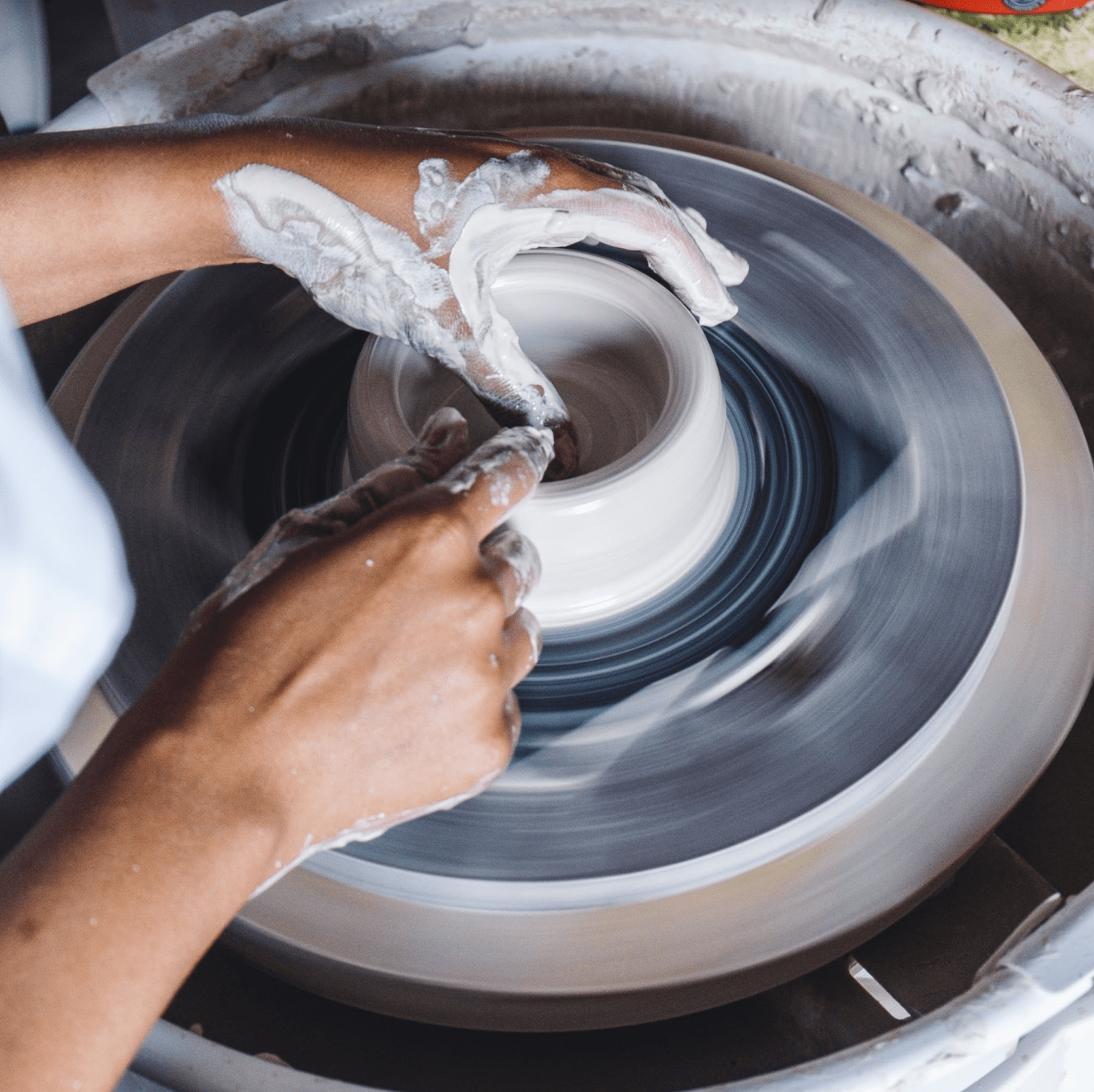
When Covid hit, like many millennials, Caroline was faced with the decision to lockdown in her small apartment in Brooklyn or head back to Montclair to her family home. She chose the latter, setting up a pottery studio in her parent’s unused garage. “I cleared out the space, bought a wheel, and the rest is history,” she says. It’s a suitable space for a studio, off the street, with great light, and a place she can create day or night.
Visiting an artist’s studio is like taking an intimate tour through a creative mind, and Caroline’s is undoubtedly organized. Each row of unglazed pottery is laid out on neat shelves, drying out before the process of firing. There is no chaos here. Tools are grouped and stacked together as needed, clean sponges await their artist’s hands, and tubs of hand-mixed glazes are stacked and labeled under the studio’s giant wooden desk. This tidiness is reflected in her pieces, sitting in order on the shelf, sizes and shapes so even that you might not realize they are handmade.
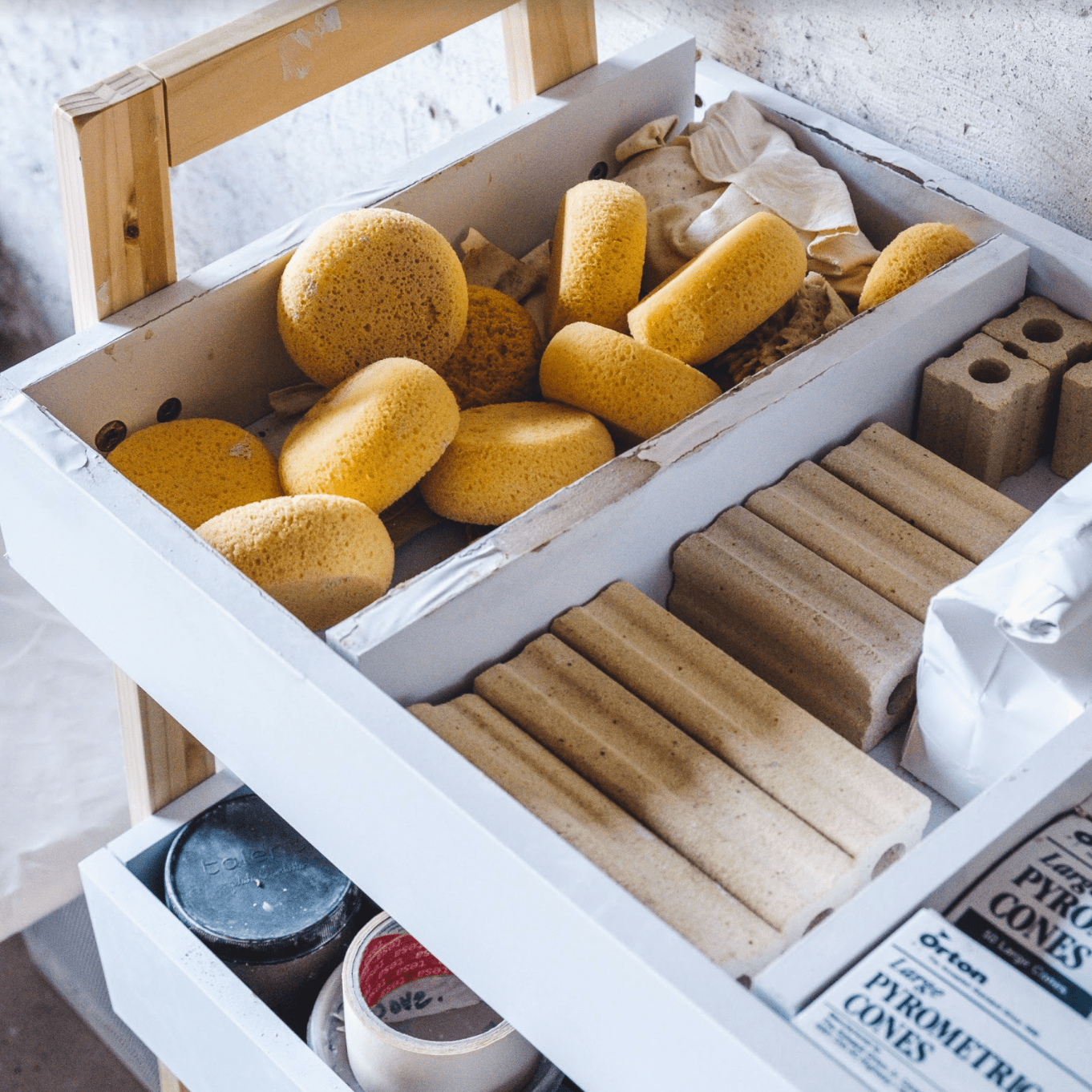
But Caroline is modest about her exacting talents, her steady hands, and her natural creativity. Beautiful and fit, she uses strong arms and the force of her body to control the process of sculpting. A pottery wheel looks like an innocent tool to the average person, not all that difficult to control. That is until one tries to master it. Clay wobbles, the wheel moves faster than expected, and there’s the whole other component of adding water to make the clay a workable consistency.
It is a difficult craft that not everyone can take to. Caroline, hands covered in wet clay, is like a fish in water: delightful to watch. Even more incredible is the speed at which she produces a finished tumbler, walls tall and even smoothed out with a wide palette tool.
The Process

What many people don’t see when they’re buying a piece of handmade pottery is the process. Like the ancient days of crafting around a fire, molding utensils from clay is an essential and yet, simple activity for any civilization: collect wet clay from a muddy bank, shape it, stick it in a fire, and then use it at will. But the modern reality of pottery is exceedingly complicated.
Different types of clay produce different appearances and require variable techniques or moistures to complete. As a result, an artist like Caroline must choose from various materials and mixes to find what works best for her desired outcome and skills.

In addition, clay comes in an array of colors, and depending on her goal, she must choose accordingly. “I tried out everything under the sun when it came to color and shape but always seemed to gravitate back to earth tones because they were gentle and calming,” she says.
Once the desired material is chosen, Caroline weighs it on a scale, assuring her pieces are roughly similar, though she emphasizes that “no two vessels are ever the same.” She then attaches several bases to her pottery wheel and gets spinning. A lump of clay quickly takes the shape of a mounded peak as she works for her hands up and outward, making sure to keep the base of her clay wider than the top. She describes the physics of how the clay wants to move and how she can control it with her body. Within what feels like a few minutes, she is holding a beautifully formed tumbler.
However, sculpting the clay is only half the process.

Clay needs to be fired to maintain its shape, but first, it must be dried. All the water in the material that allows a potter to shape it must be taken out for strength and stability. Some days a piece can sit overnight on a shelf and be dry enough to fire, but several days may be necessary to reach peak dryness when heat and humidity are high. Additionally, clay cannot be fully dried by air alone due to the way water particles cling to it, and so, the pottery must be dried in a kiln, fired to remove those last ounces of moisture.
“A piece goes through two firings: a bisque fire at a lower temperature, then a glaze fire at a higher temperature. After the last firing, the piece is ready to be shipped off to its new home,” Caroline shares.
After the initial bisque firing, the kiln-dried piece is hand-dipped in Caroline’s custom glazes made from her recipes and experiments. Glazes comprise weighted mixes of minerals that react inside the kiln to both harden and produce a desired color. “It can take about three months to develop a new glaze because you’re trying to identify things like the right clay body, the best firing temperature for the texture and effect you’re trying to achieve. You slowly find yourself returning to high school chemistry to understand how materials will react,” she says.
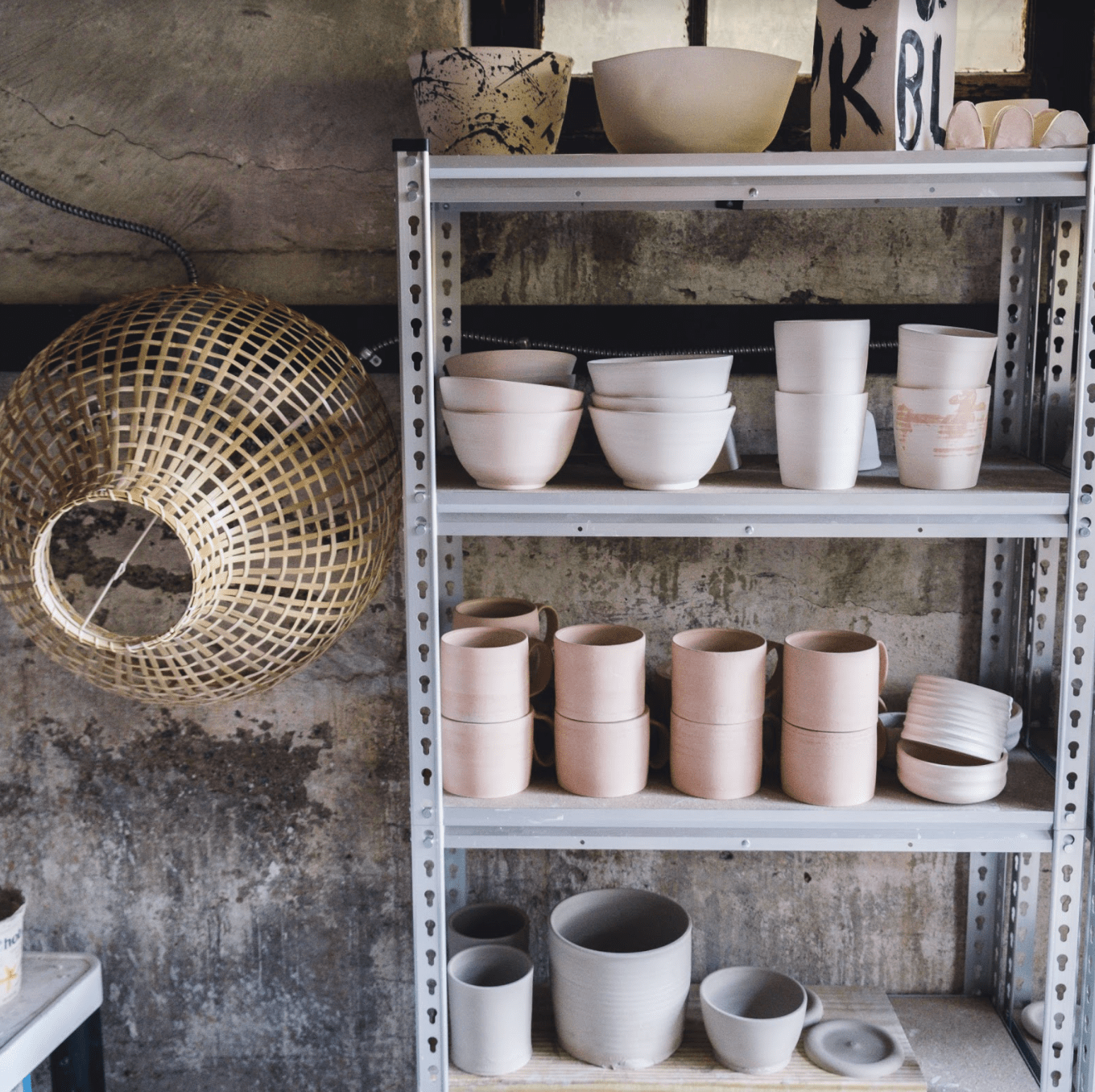
A second firing is essential to sealing and finalizing the pottery. Each completed piece will be slightly different, as each sculpt and hand-dip cannot be exactly matched. With that, you get a subtle variation that feels natural and cohesive.
One Grayson White Ceramics piece can take up to six weeks from start to finish, but it is worth the wait. As Caroline points out her works, she knows each one intimately, which one has a hairline crack that happened in the final firing, which one was a successful experiment yet to be duplicated, and which one she cannot bear to sell. It is clear: she is not just selling a ceramic coffee mug. She is selling a part of her creative passion in each piece she makes.
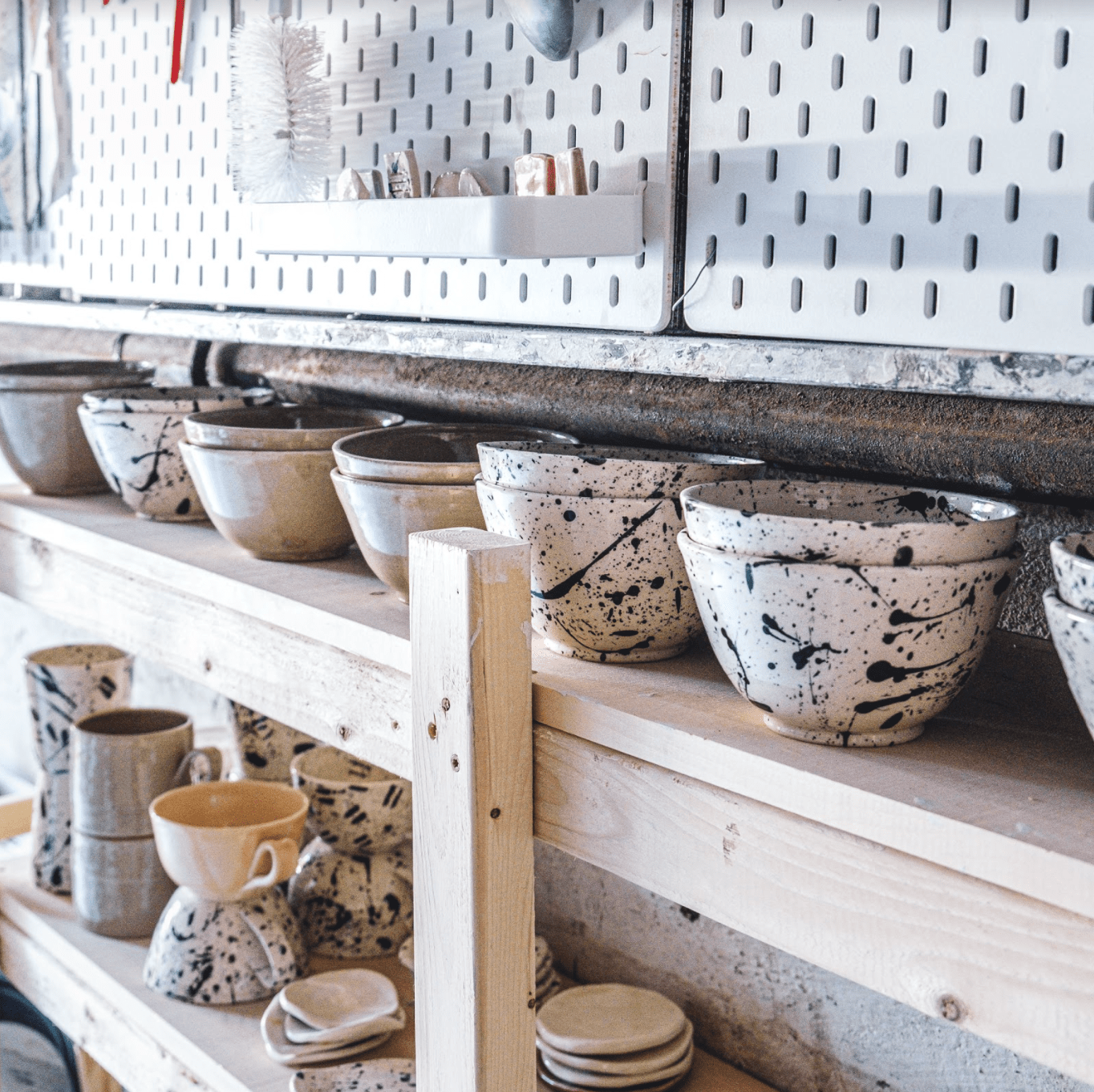
“I’d always like customers to know that each Grayson White piece is truly made with love and intention. I hope for that piece purchased to become a part of someone’s daily rituals and routine.”
See More: Paper Mill Playhouse: A Piece of Broadway in Essex County
Her advice to other creatives looking to find their way? “I think that the beauty of living life to your full potential is pursuing all that may be calling you. Don’t feel boxed in or forced to pick just one passion. You can have many. I’ve always been able to juggle different passions. I never wanted to limit myself to one box.”

Where To Buy
Because of the time, it takes to make each piece, Caroline opens her virtual shop once she has completed a significant inventory of work. Her pieces often sell out the same day, so to be notified of the next drop, sign up for the Grayson White Ceramics newsletter on the website. Her next product drop of over 100 pieces is scheduled for July 14th!
If you’re interested in learning the craft of pottery yourself, Caroline offers private lessons at her Montclair studio. You can learn to make your own ceramic pieces and have them fired and glazed for you. Find more details on graysonwhiteceramics.com or follow the brand on Instagram at @graysonwhiteceramics.




